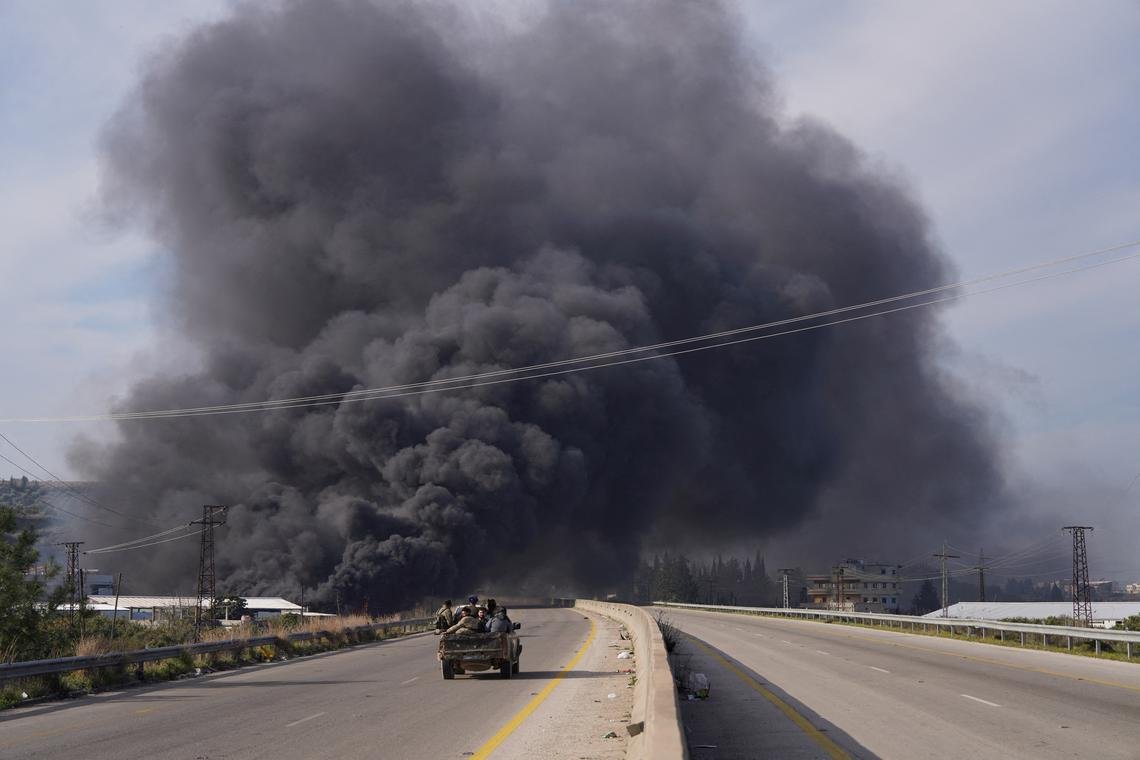LATAKIA – Syria has suffered its worst bloodshed since Mr Bashar al-Assad was toppled from power, with more than 1,000 people reported killed in violence that has swept the coastal region since March 6.
The violence has pitted the Islamist-led government’s security forces against fighters from Mr Assad’s Alawite minority.
The dead include hundreds of Alawite civilians, whom the Syrian Observatory for Human Rights reported were killed in reprisals after attacks on security forces.
What has driven the violence, how has interim President Ahmed al-Sharaa reacted, and what have world power said?
How did the violence unfold?
The violence began to spiral on March 6, when the authorities said their forces in the coastal region came under attack from fighters aligned with the ousted Assad regime.
The Sunni Islamist-led government poured reinforcements into the area, which is heavily populated by Alawites, to crush what it described as a deadly, well-planned and premeditated assault by remnants of the Assad government.
As government reinforcements deployed, mosques in regions loyal to the new administration began calling on people to wage jihad, or holy struggle, in support of security forces.
By the afternoon of March 7, reports began emerging that scores of civilians had been killed in sectarian reprisals in Alawite towns and villages. As of March 8 evening, the Syrian Observatory for Human Rights, a British-based organisation that reports on the conflict, said 973 civilians were killed in reprisal attacks carried out by government forces or fighters aligned with them.
More than 250 Alawite fighters were killed and more than 230 members of government security forces were also killed, it said.
Reuters has not been able to independently verify the tolls.
Who are the Alawites?
The Alawites are the second-largest religious group in Syria after Sunni Muslims. Their faith is an offshoot Shi’ite Islam.
The state when led by Mr Assad recruited heavily from the Alawite community for its army and security apparatus, which was notorious for its brutality during more than five decades of family rule.
This put many Alawites on the frontlines of the civil war that erupted out of protests against Mr Assad’s rule in 2011. The conflict took on a sectarian dimension as Sunni Muslim rebel groups sought to topple the Assad government backed by Shi’ite Islamist Iran, Lebanon’s Shi’ite Muslim Hezbollah, and others.

Members of the Syrian forces ride on a vehicle as they battle against a nascent insurgency by fighters from ousted leader Bashar al-Assad’s Alawite sect.PHOTO: REUTERS
Mr Sharaa led the most powerful Sunni Islamist group fighting Mr Assad. Known as the Nusra Front, the group was part of al-Qaeda until he severed ties with the jihadist network in 2016 and renamed his organisation.
Mr Sharaa, in a 2015 interview with Al Jazeera, described the Alawites as part of a sect that “moved outside the religion of God and of Islam” and urged them to renounce Mr Assad and change their beliefs to remain safe.
Since Mr Assad was ousted, Mr Sharaa has pledged to run Syria in an inclusive way. But while he has publicly engaged Kurds, Christians and Druze, there have been no declared meetings between him and senior Alawite figures.
Many Alawites say that they suffered like other Syrians under the rule of Mr Assad and his father.
Prior to March 6’s escalation, Alawite activists had reported violence and attacks on their community following Mr Assad’s ouster, particularly in rural Homs and Latakia.
What has Mr Sharaa said about the violence?
Mr Sharaa, in a speech on March 9, said remnants of Mr Assad’s government, supported by external parties, were seeking to create strife and drag Syria back into civil war with the aim of dividing it.
He promised to form a fact-finding committee and said its findings would be made public, vowing to bring to account anyone involved “in the bloodshed of civilians” or mistreating them.
He has also announced the formation of a committee aimed at preserving civil peace, which would be tasked with communicating with the people of the coast and providing them with the support they needed to guarantee their protection.
In a Reuters interview, Mr Sharaa said mass killings of Alawites were a threat to his mission to unite the country, and promised to punish those responsible, including his own allies if necessary.
What are foreign powers saying?
The violence has prompted international alarm.
The United States, which imposes sanctions on Damascus, urged Syrian authorities to hold accountable the “radical Islamist terrorists” that had killed people in Syria and said it stood with Syria’s religious and ethnic minorities.
Israeli Defence Minister Israel Katz, writing on X, said atrocities committed against the Alawites showed Mr Sharaa had revealed his “true face” as a jihadist.
But Saudi Arabia and Turkey, allies of Damascus, both signalled their backing for the administration as violence was escalating last week. Riyadh condemned “crimes being undertaken by outlaw groups” in Syria and their targeting of security forces.
Turkish Foreign Minister Hakan Fidan, whose country has forces on the ground in north-western Syria, has urged calm and said unnamed foreign elements were partly to blame.
Iran, which backed Mr Assad through the war, has warned that the violence in Syria could cause regional instability. REUTERS
Join ST’s Telegram channel and get the latest breaking news delivered to you.
